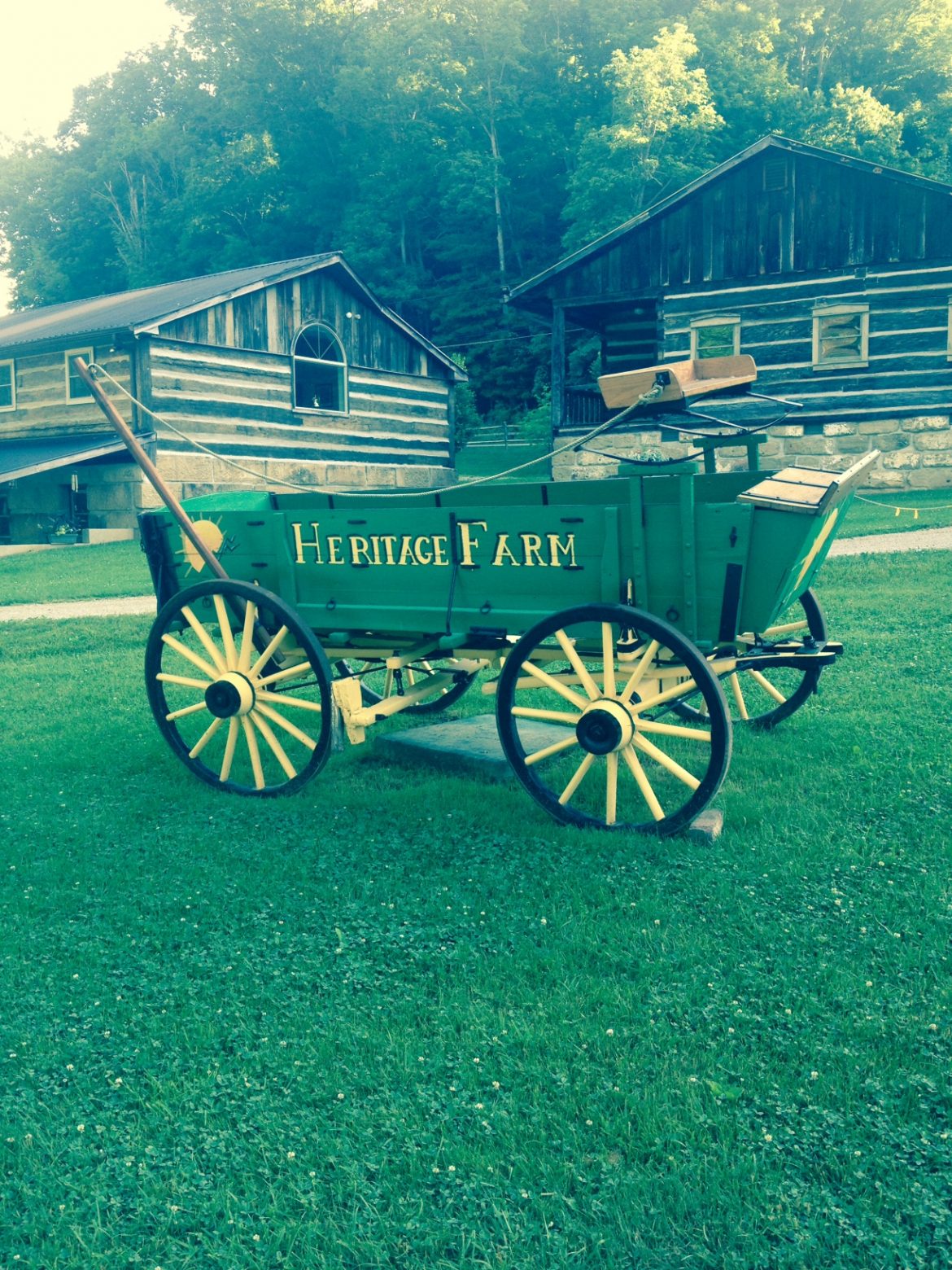
Heritage Farm: A Gateway to America’s Rural Past and Much More

Heritage Farm: A Gateway to America’s Rural Past and Much More
By: claycormany in Life in General
Question: Where can you meet pigs and rabbits face-to-face, take a tractor ride through a covered bridge, watch a grist mill in action, and see a blacksmith turn red-hot metal rods into knives? Answer: Heritage Farm Museum and Village. This past weekend, my wife, Becky, and I visited Heritage Farm, which is nestled in the hills just outside Huntington, West Virginia. Becky learned about the farm from Rebekah Perry, an Otterbein University student who serves with her on the school’s Board of Trustees. When we arrived at Heritage with our friends, Joe and Ann Ottobre, Rebekah gave the four of us a guided tour of the farm’s many attractions. Our first stop was a petting zoo, where we met Penelope Pig, Moby Duck, Oreo the Rabbit, Leonard the Turtle, and Pepe the Cat. One animal we didn’t pet was Tom the Peacock, who often commanded our attention with his loud screams.
After our tour of the petting zoo, we boarded a tractor-pulled wagon and, with Rebekah’s dad Audy at the wheel, took a trip around the perimeter of the farm. We bumped across a covered bridge and then viewed larger animals belonging to the farm. Sheep, shaggy cows, and a small bison didn’t seem too excited to see us, but a pair of dogs watched our movements closely. Audy told us that these dogs are there to raise a ruckus if any predators approach the farm.
After a delicious lunch, which included lemonade sweetened with brown sugar, Rebekah took us to the blacksmith shop. There, we watched the blacksmith and his apprentice use an enormous bellows to bring their fire to an optimum level, and then hammer rods of red-hot iron on a 500-pound anvil until they were formed into knives. Each of the attractions we visited thereafter offered its own unique blend of artifacts and curiosities. In the general store, surrounded by shelves loaded with jars, tins, canisters, and bottles, the proprietor showed us how an early-model vacuum cleaner worked. In the grist mill, we tried making corn meal by turning the handles of old grist mills and then watched a more-efficient (but very noisy) machine accomplish the same task, using a fuel-powered engine and a tension belt pulley. One of the most-amazing individuals we met was a blind basket-weaver. This skillful artisan could work wonders with her fingers, as evidenced by her creations. This lady’s baskets were of different sizes, but all seemed to be sturdy and easy to hold. (Ann bought one. I’ll be interested to see how she uses it.)
Some of the historic shops and sites at Heritage Farm were closed during our time there. The log church, the one-room schoolhouse, and the pottery kiln are among the attractions we will need to see during a future trip. We did have time to visit several of the farm’s museums that are organized according to specific themes. The Transportation Museum features a biplane suspended from the ceiling as well as a Conestoga wagon and numerous vintage automobiles. A miniature railroad with little engines gliding across trestles and vanishing into tunnels reminded me of my childhood love of trains. But an old-fashioned bicycle with its enormous front wheel and uncomfortable seat made me glad I didn’t live in the “good old days.” The Progress Museum offered a series of kitchen scenarios showing how cooking implements and consumer goods changed from the late 1800s up through the 1930s. One part of this museum had several rows of old washing machines. Another had shelves filled with radios and clock radios. (I’m certain some radios similar to these were in use during my youth. I guess that happens when you get older. Objects you once saw everyday as a child wind up in museums.) The museum that held my interest the most was the one I thought would interest me the least: The Bowes Doll & Carriage Museum. I entered the museum mostly to make my wife happy but came out totally impressed. These incredible dolls were collected by a husband and wife who, having no children of their own, contributed their collection to Heritage. Besides being life-like, the dolls wore colorful custom-made clothing and were exhibited in ornate, beautifully furnished settings. Some sat in carriages or chairs; others stood on staircases or rested in beds. Some dolls even had dolls of their own.
When our day ended, the four of us went to our lodging — The Applebutter Inn. I liked the inn because it provided a cabin-like environment yet still had all the conveniences associated with modern living, such as indoor plumbing, a refrigerator, and air conditioning. It also had a front porch with chairs where we could relax and take in the natural beauty around us. We learned from Rebekah that Heritage has several other buildings where people can stay. One, which looks like a barn from the outside, could sleep up to 40 people.
Most of this blog on Heritage Farm focuses on things of interest to adults. Yet, the farm also has a multitude of attractions and activities for children. Those will be the focus of my next blog on June 3.
Tags: animals, dolls, farm, Heritage, historic, museum
